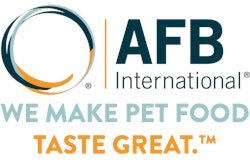
During one of the sessions at Petfood Innovation Workshop, representatives from AFB International discussed five techniques a company can use in validation of a new pet food or treat, as well as evaluation of an existing product.
1. Benchmarking
Benchmarking involves looking at products on the pet food market and evaluating their performance over time, said AFB International representatives. This provides a means of judging how well a new product may perform in comparison to similar products. Monitoring sales performance of a product allows alterations to marketing strategies.
2. Application evaluation
More is not always better in the world of pet food palatants, said AFB International reps. They gave the example of a test in which a kibble with a two percent palatant formulation outperformed a similar product with three percent of the same palatant in a test with live dogs.
3. Analytical support
Even without real dogs and cats, analysis can give insights into the potential success or looming failure of a new pet food product. Chemists and their devices can measure the volatile molecules released from a pet food or treat and compare them to know standards. By using empirical results, a pet food formulator can validate if their new product really achieved the characteristics, they were aiming for and then pinpoint where they need to make adjustments to fix problems.
4. Palatability assessment
Ultimately, if cats and dogs won’t eat a new pet food product, that innovative product will fail even if it meets all the demands of pet owners. Through palatability testing, pet foods and treats can be compared side by side or against themselves overtime.
In two-bowl testing, researchers may evaluate a dyad of dog foods, which can allow marketing claims like “dogs prefer product A to product B.” Similarly, two-bowl testing allows comparison of a combo of cat foods in order to improve a formulation. In one-bowl testing, AFB researchers can simulate in-home behavior of cats and dogs to measure persistence of intake, or how much of a food that the animals continue to eat over time.
5. Behavior analysis
Like one-bowl testing, behavior analysis allows observation of how a pet food my perform in consumers’ home. By watching dogs and cats behaviors, the aforementioned agents of AFB can observe subtle differences in animals’ enjoyment by watching how they lick, sniff and otherwise interact with foods. For example, if a cat laps up the gravy but spits out the meat chunks, sometime needs to be done to boost that meat’s palatability.
These five techniques can help pet food companies develop new products, improve existing ones and identify problems.
Petfood Workshop was hosted on April 23 at Kansas State University-Olathe in Olathe, Kansas, USA.

















